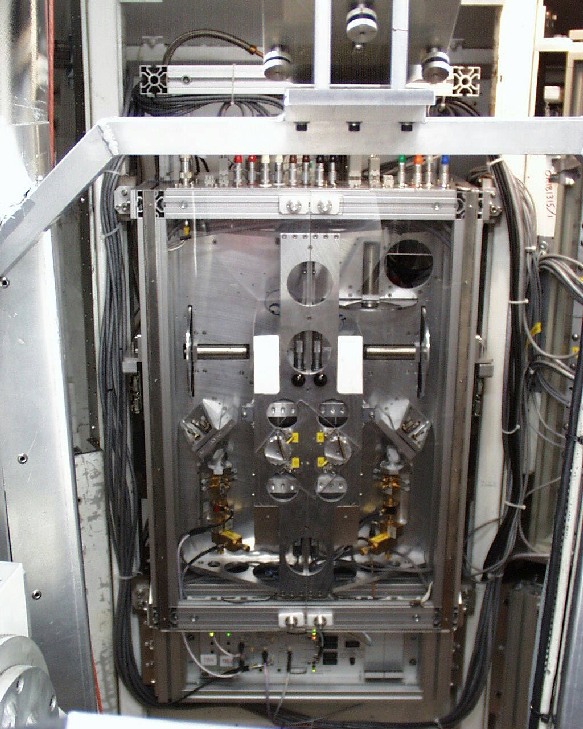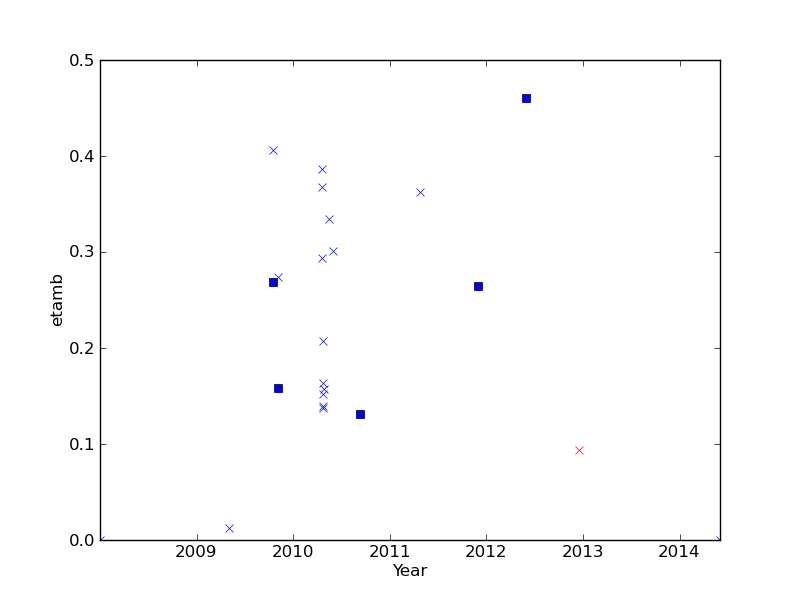Receiver W, developed at MRAO in Cambridge, is a dual channel receiver operating at 620-710 GHz (“D”-band)**. RxW has two SIS mixers receiving orthogonal linear polarization from nominally the same position on the sky. With proper alignment the mixers observe the same position on the sky improving the sensitivity by a factor of ~2. Using a Martin-Puplett interferometer the unwanted sideband is terminated on a cold load. This improves the receiver performance by reducing the noise from the atmosphere. The receiver can be tuned to a Single SideBand (SSB) or Dual SideBand (DSB) mode.
Trx ranges from ~650 K below 650 GHz, 450-500 K between 450 and 460 GHz and 500-550 K above 660 GHz. Tsys in good band 1 weather is 1000-1500 K.
** The receiver supports two frequency bands which not can be used simultaneously. When RxW was delivered it operated at 620-710 GHz “D”-band and 430-510 GHz “C-band”. It was later modified to work at 620-710 GHz “D”-band and 325-375 GHz (“B-band”) to support operation as a part of the SMA array. Currently is only has the D-band mixers installed. The “B”-band mixers have been used as spares for HARP.
The figure below shows the main beam efficiency of RxW-D obtained from observations of Mars (crosses) and Uranus (squares). Red symbols indicate observations made during the day.





